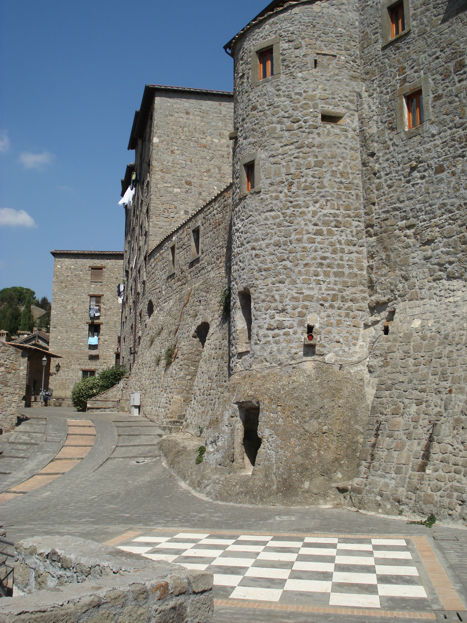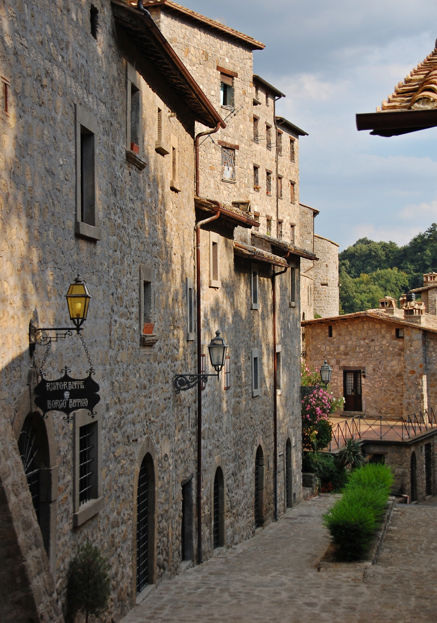Soaring above the Tiber River Valley
Bassano in Teverina, an ancient and historic town in northern Lazio, is perched high on a forested ridge in the Cimini Mountains. The town enjoys commanding views of the Tiber River valley, and on a clear day, it is even possible to see the often snow-capped peaks of the Apennine Mountains nearly 100 kilometers to the east.
View of the Tiber River Valley from Bassano in Teverina
In the valley below the town, there is a small marshy area fed by sulphurous springs that is all that remains of the once famous and sacred Lake Vladimonis. Pliny the Younger described the lake as "a lying wheel with a regular circumference... paler, greener and more intense than the sea." The Etruscans performed rituals and celebrations on its shores, and the Romans immersed their weapons in its waters to make them invincible.

The true origins of Bassano in Teverina are lost in the mists of history. It has been inhabited at least since the time of the Etruscans and probably long before that. In this part of Italy, archaeologists have uncovered evidence of human settlements dating back to the neolithic age, 8,000 years ago.
"Bassano" appears derived from Latin, suggesting that at one time the area was part of a great estate owned by a Roman family named Bassus. The name of Bassano in Teverina appears for the first time in the 11th century. According to the legend, the wealthy Countess Matilda of Canossa, owner of many grand properties in Viterbo, donated Bassano's castle and the town to Pope Gregory VII in 1070. Thereafter, the town, was always under the protection of the Church, safe from attacks by the powerful nearby towns, especially Orte.

On November 25, 1943, during the Second World War, Bassano in Teverina was severely damaged by a tremendous explosion that shook the entire area. A German munitions train that was parked at the station below the town blew up with such force that it destroyed the roofs and walls of the town's centro storico (historic center), forcing the residents to abandon their homes and making that part of the town uninhabitable for more than 40 years. In the 1980s, the town began a slow rebirth thanks to a wealthy local businessman and an enlightened town council. More than 30 houses in the centro storico were restored and sold, primarily to well-to-do Romans, and the town came back to life.
Today, Bassano in Teverina's centro storico once again glories in its medieval style and charm.


